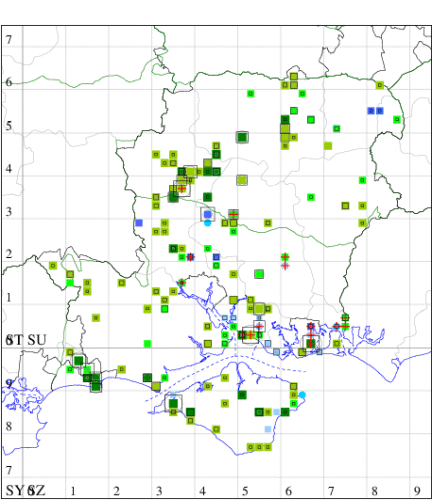Cyclamen Tortrix
Clepsis spectrana
Checklist Number49.037 [B&F: 0993]
Verification
Record will be accepted (subject to date and location checks)
Classification
| Family: | Tortricidae |
| Subfamily: | Tortricinae |
| Genus: | Clepsis |
| Species: | spectrana |
| Authority: | (Treitschke, 1830) |
Common in damp woodland, fens, marshes and gardens throughout the British Isles. Widespread and fairly common in Hampshire, but there are no recent records from the Isle of Wight. Wingspan male 15-22 mm, female 17-24 mm. Yellowish forms of this species may be distinguished from C. rurinana by the stronger markings on the costa of the forewing and the more uniform whitish grey hindwing. Larva feeds on many different herbaceous plants, including Willowherb, Meadowsweet, Sea Wormwood and Sea Lavender, and, in gardens, on Cyclamen, living within a spun or rolled leaf.


The abundance in each month is indicated as follows:
 No records
No records Very occasional
Very occasional Irregular
Irregular Uncommon
Uncommon Off-peak, but not unusual
Off-peak, but not unusual Off-peak, but not unusual
Off-peak, but not unusual Main flight time
Main flight time| J | F | M | A | M | J | J | A | S | O | N | D | |
|---|---|---|---|---|---|---|---|---|---|---|---|---|
| Adult |  |  |  |  |  |  |  |  |  |  |  |  |
| Larval |  |  |  |  |  |  |  |  |  |  |  |  |
()(IMG_5908).jpg)

()(IMG_5908).jpg)